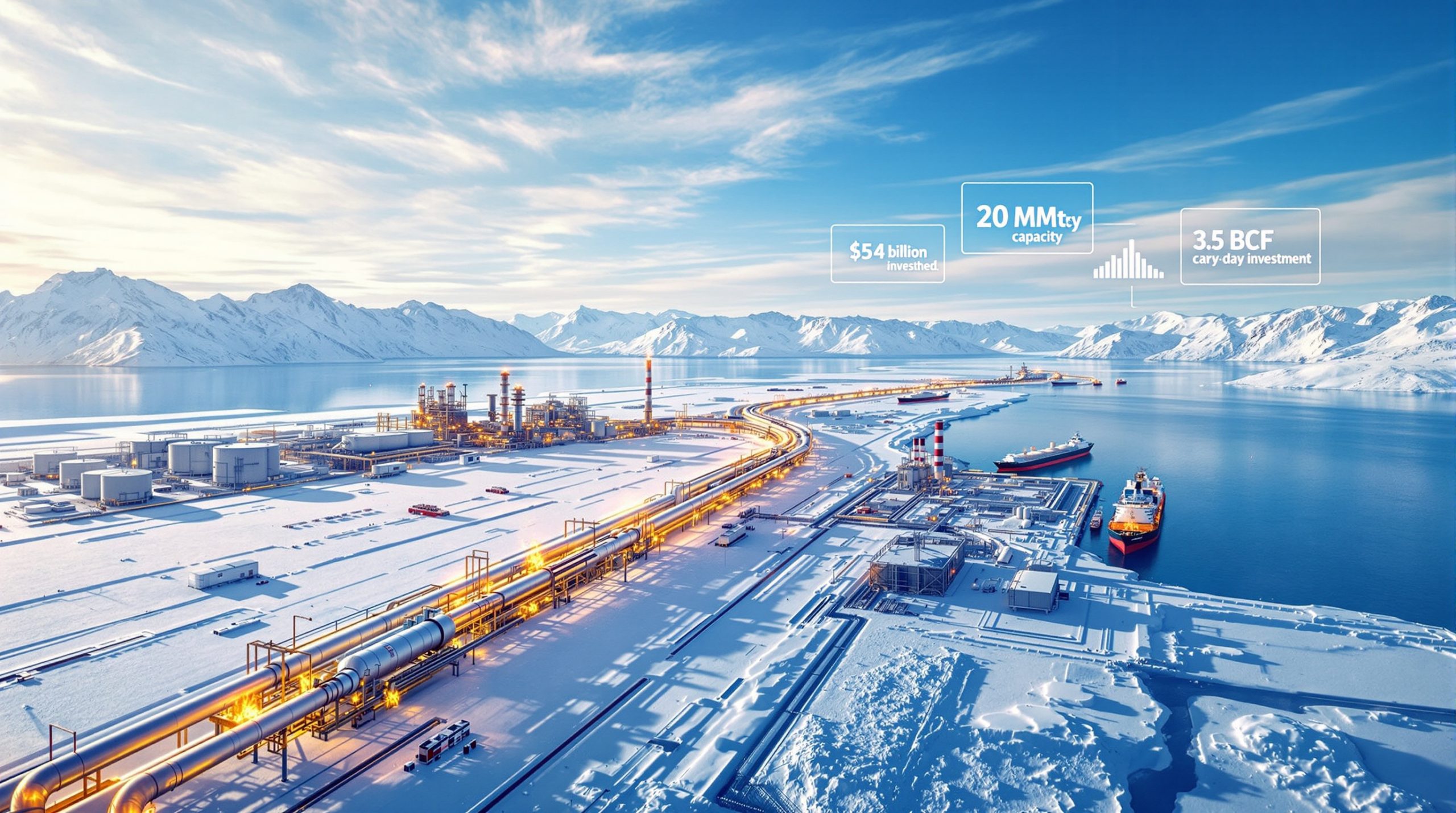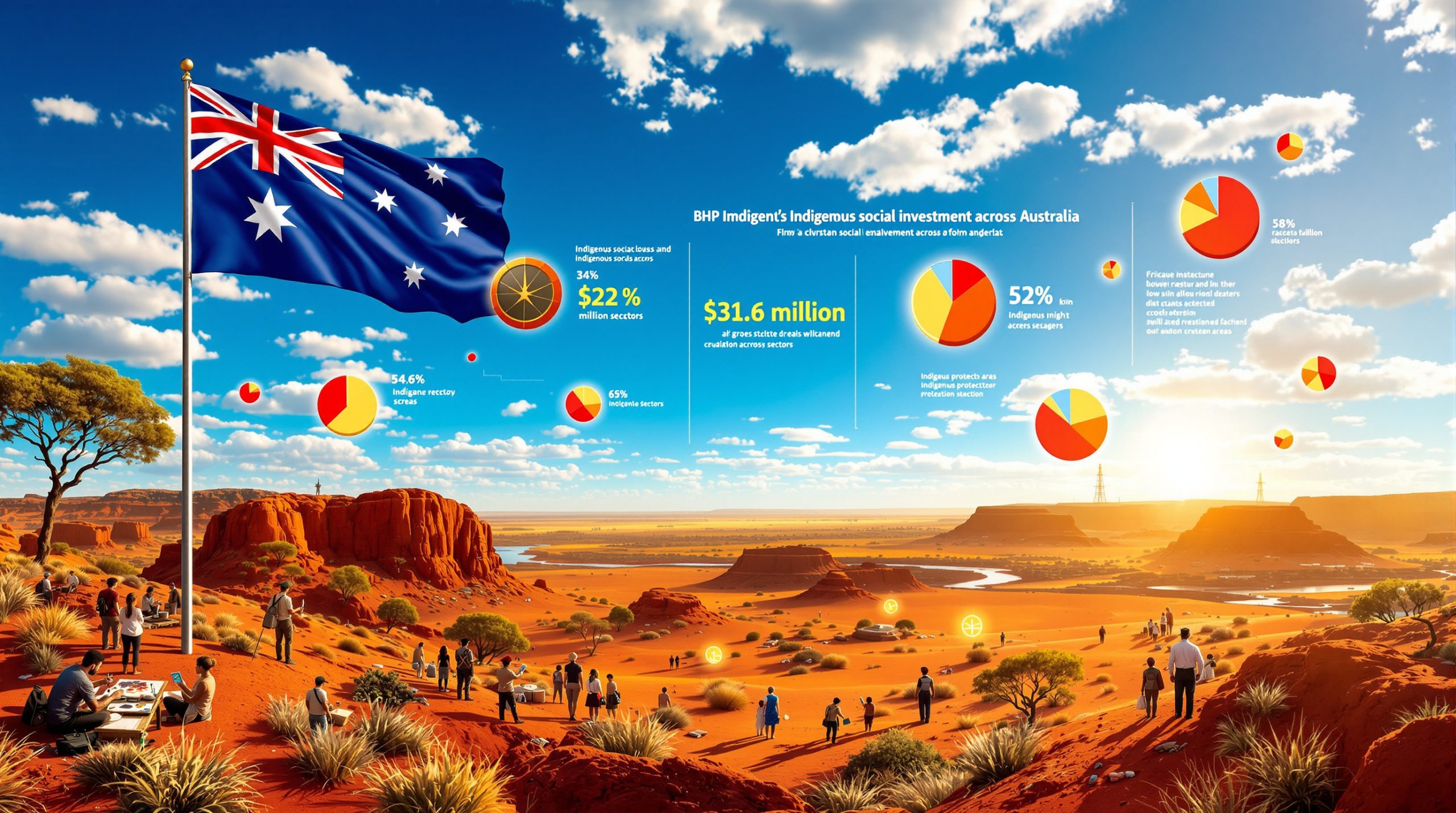The Unconventional Revolution Driving Global Energy Markets
The transformation of America's energy landscape through unconventional drilling represents one of the most significant industrial shifts of the 21st century. This U.S. shale strategy and Middle East energy boom has fundamentally altered global supply chains and geopolitical relationships, creating unprecedented opportunities for regional development.
Between 2008 and 2024, the United States evolved from importing over 60% of its petroleum needs to becoming a net energy exporter. According to the U.S. Energy Information Administration, crude oil production increased from approximately 5.0 million barrels per day in 2008 to 13.3 million barrels per day by 2023. Natural gas production reached 101.6 billion cubic feet per day in 2023, representing approximately 90% growth from 2008 levels.
Key Performance Metrics:
- U.S. oil production surged from 5 million barrels daily to over 13 million by 2024
- Natural gas output approached 100+ billion cubic feet per day
- Net petroleum imports dropped to 27% of total consumption
The technological foundation rests on two breakthrough innovations: horizontal drilling techniques accessing previously unreachable reserves, and hydraulic fracturing methods unlocking hydrocarbons from tight rock formations. These advances created a production model emphasising rapid deployment, cost efficiency, and operational flexibility that Middle Eastern nations are now eager to replicate.
Strategic Adoption of American Shale Technologies
Regional powers recognise that mastering unconventional production methods offers multiple competitive advantages in an evolving global energy market. The strategic calculus driving Middle Eastern interest in U.S. shale strategy and Middle East energy boom extends far beyond simple resource extraction.
Primary Strategic Drivers:
-
Energy Security Enhancement: Developing domestic unconventional resources reduces reliance on conventional fields while extending reserve life across existing assets
-
Economic Diversification: Shale gas development supports industrial expansion, particularly in petrochemicals and manufacturing sectors requiring reliable, low-cost feedstock
-
Export Optimisation: Increased domestic gas production allows countries to redirect more crude oil toward higher-value international markets rather than domestic power generation
-
Technological Sovereignty: Acquiring advanced drilling and completion capabilities builds indigenous expertise for future energy projects across the region
According to the International Energy Agency's Middle East Energy Outlook 2023, regional electricity demand is projected to grow approximately 3-4% annually through 2030. This growth trajectory necessitates significant domestic energy production expansion, making American shale technologies increasingly attractive to Gulf Cooperation Council countries.
Saudi Arabia's Massive Shale Gas Initiative
Saudi Arabia's approach to unconventional resource development centres on the massive Jafurah shale gas project, representing the kingdom's most ambitious energy diversification initiative outside traditional oil production. Furthermore, this aligns with broader Saudi energy exploration initiatives across the region.
Jafurah Project Specifications:
| Metric | Target/Status |
|---|---|
| Peak Production Rate | 2.0 billion standard cubic feet per day |
| Timeline to Peak | 2030 |
| Phase 1 Completion | 2025 |
| Gas Output Increase | 80% by 2030 |
According to Saudi Aramco's Q3 2025 Financial Statement released November 4, 2025, Phase 1 of the Jafurah Gas Plant remains on track for completion by year-end 2025. Early production wells are demonstrating commercial flow rates that validate geological assessments and completion techniques adapted from American shale basins.
The kingdom has strategically partnered with American service companies to accelerate development timelines and reduce technical risks. National Energy Services Reunited Corp. leads hydraulic fracturing operations, bringing proven Permian Basin expertise to Saudi geological formations. This partnership exemplifies the U.S. shale strategy and Middle East energy boom driven by American technological transfer.
Financial Structure and Investment Flow:
BlackRock led a consortium investing approximately $11 billion specifically in midstream infrastructure, demonstrating international confidence in the project's commercial viability. This investment model combines Saudi capital with American technical expertise and global financial backing, creating a template for future unconventional development across the region.
UAE's Integrated Energy Hub Development
The United Arab Emirates has pursued a parallel but distinct approach to unconventional resource development, focusing on integrated energy hub development rather than standalone gas projects. Moreover, this strategy incorporates advanced AI drilling innovations to optimise operations.
Abu Dhabi National Oil Company has partnered directly with EOG Resources Inc., one of America's most successful shale operators, to develop both oil and gas reserves using proven U.S. methodologies. According to ADNOC's upstream chief executive Musabbeh Al Kaabi, the company utilises knowledge and methodology learned from American hydraulic fracturing in its own fields.
Ruwais Development Complex:
| Component | Capacity/Timeline |
|---|---|
| Target Gas Production | 1 billion standard cubic feet per day |
| Production Timeline | Before 2030 |
| LNG Export Capacity | 9.6 million tons annually |
| Integration Benefits | Doubles current production capability |
The Ruwais project exemplifies integrated energy development, combining unconventional gas production with existing refinery operations and new LNG export facilities. This approach maximises infrastructure synergies while creating multiple revenue streams from a single geographic location, representing a sophisticated evolution of the U.S. shale strategy and Middle East energy boom adapted to regional conditions.
Global Gas Demand Surge Driving Investment Decisions
The surge in worldwide natural gas consumption is creating unprecedented market opportunities that Middle Eastern producers are positioning to capture through expanded production capabilities derived from American shale expertise. Consequently, this trend aligns with broader natural gas trends affecting global markets.
Demand Growth Projections:
Data Center and AI Infrastructure: Artificial intelligence, cloud computing, and data center expansion are projected to drive 40-50% of incremental global gas demand through 2040. Industry projections suggest data center-related consumption could add 150-200 billion cubic meters annually, representing a 3.6-4.9% increase over current global demand.
LNG Market Transformation: Liquefied natural gas has emerged as the world's primary emergency energy source since geopolitical disruptions began affecting pipeline supplies in 2022. Unlike fixed pipeline infrastructure, LNG offers rapid deployment flexibility for energy security, making it an attractive export opportunity for Middle Eastern producers developing shale resources.
Regional Power Generation Needs: Middle Eastern electricity demand is forecast to increase 50% by 2035, equivalent to adding the combined consumption of Germany and Spain. Cooling and desalination alone will account for approximately 40% of this growth over the next decade, creating substantial domestic market opportunities for unconventional gas production.
Economic Pressures Facing U.S. Shale Operations
Despite technological successes, American shale producers confront mounting economic pressures that could reshape the industry's long-term trajectory and influence international development strategies. Additionally, these challenges are reflected in oil futures trends across global markets.
Rising Breakeven Costs:
Industry analysis projects U.S. shale breakeven costs will increase from approximately $70 per barrel in 2025 to as high as $95 per barrel by the mid-2030s. This 35% increase results from core inventory depletion and migration toward lower-quality drilling locations, creating opportunities for Middle Eastern producers with newer, higher-quality unconventional resources.
Operational Efficiency Gains vs. Resource Quality Decline:
While companies like Permian Resources have reduced average drilling cycle times to just 13 days through AI optimisation and advanced completion techniques, these efficiency improvements are being offset by declining well productivity in tier-one locations. This trend validates Middle Eastern strategies to develop fresh unconventional resources using proven American technologies.
Capital Allocation Strategies:
Major operators including Exxon Mobil continue expanding 2025 production guidance despite oil prices approaching breakeven thresholds, suggesting confidence in long-term demand growth and operational improvements. However, this pressure on U.S. operators creates additional incentives for technology transfer partnerships with Middle Eastern national oil companies.
Balancing Gas Development with Renewable Energy
The region's energy strategy encompasses both conventional resource development and aggressive renewable energy deployment, creating a diversified portfolio approach to future energy security that complements the U.S. shale strategy and Middle East energy boom adoption.
Solar Capacity Expansion:
According to the Middle East Solar Industry Association's 2025 Solar Outlook Report, MENA's solar capacity could exceed 180 GW by 2030. In 2024 alone, installed capacity reached 24 GWAC, representing 25% growth from the previous year.
UAE Renewable Targets:
| Initiative | Target | Timeline |
|---|---|---|
| Dubai Clean Energy Strategy | 75% renewable energy | 2050 |
| Abu Dhabi Vision | 30% renewables | 2030 |
| Solar Capacity Growth | 6.1 GW (from 12 MW in 2012) | 2023 achieved |
Energy Mix Transformation:
Natural gas and oil currently comprise over 90% of regional electricity generation, but this composition is shifting significantly. Natural gas is expected to cover half the demand growth through 2035, while oil's share will decline from 20% today to just 5%. This transition creates substantial market opportunities for domestically produced shale gas.
Geopolitical Implications of Energy Cooperation
The technological partnership between the United States and Middle Eastern energy producers represents a fundamental shift in traditional competitive dynamics, creating new forms of strategic interdependence that reshape global energy relationships.
Historical Context Reversal:
Prior to the 1973 Oil Crisis, Western oil companies known as the "Seven Sisters" controlled global oil exploration, development, and pricing. The current cooperation model inverts this relationship, with Middle Eastern national oil companies accessing American technology while maintaining sovereign control over resources. This represents a sophisticated evolution where the U.S. shale strategy becomes a knowledge export rather than a competitive threat.
Strategic Partnership Benefits:
For the United States, becoming integral to Middle Eastern energy production provides sustained influence and commercial opportunities without the political complexities of direct resource ownership. For regional producers, American expertise accelerates development timelines while reducing technical and financial risks associated with unconventional resource development.
Competitive Positioning:
Rather than viewing the U.S. as a future competitor, Saudi Arabia and the UAE recognise American shale technology as a knowledge resource that enhances their own competitive positioning in global markets. This collaborative approach enables rapid scaling of unconventional production capabilities while maintaining regional energy sovereignty.
Technology Transfer Shaping Future Energy Markets
The ongoing collaboration between American shale expertise and Middle Eastern capital is establishing new models for international energy development that could influence global resource extraction patterns and accelerate regional growth.
Innovation Diffusion Patterns:
Proven technologies from U.S. shale basins are being adapted to different geological conditions across the Middle East, creating region-specific applications of horizontal drilling and hydraulic fracturing techniques. The Jafurah formation, for example, presents higher pressure and temperature conditions than typical Permian Basin plays, requiring specialised equipment and completion designs.
Operational Excellence Transfer:
American companies are sharing not just equipment and techniques, but entire operational philosophies emphasising rapid deployment, cost optimisation, and production flexibility. These principles represent significant departures from traditional Middle Eastern mega-project management approaches, potentially revolutionising regional energy project development timelines and economics.
Future Development Scenarios:
As Middle Eastern producers master unconventional technologies, they may develop indigenous capabilities that reduce dependence on American service companies while maintaining strategic partnerships for advanced techniques and equipment. This evolution could create a new category of global energy technology exporters beyond traditional Western companies.
Investment Opportunities in Energy Transformation
The convergence of American shale expertise and Middle Eastern capital is creating multiple investment themes across energy infrastructure, technology services, and integrated energy development. In addition, these opportunities align with broader investment strategies for the energy sector.
Infrastructure Investment Flows:
Major financial institutions are recognising the commercial viability of Middle Eastern unconventional projects, as demonstrated by BlackRock's multi-billion dollar commitment to Saudi Arabia's Jafurah development. This validates the investment thesis surrounding technology transfer from the U.S. shale strategy to regional applications.
Service Company Expansion:
American oilfield service companies are establishing permanent Middle Eastern operations to support ongoing development programmes, creating sustained revenue streams beyond traditional U.S. market cycles. Companies like National Energy Services Reunited Corp. are building regional expertise and operational capacity to serve growing unconventional development programmes.
Integrated Energy Hubs:
The UAE's Ruwais model of combining unconventional production, refining, and LNG export capabilities may become a template for other regional energy hubs, creating opportunities for comprehensive energy infrastructure investment. This integrated approach maximises value creation from unconventional resource development while providing multiple revenue streams and market optionality.
Market Psychology and Long-Term Outlook:
The psychological shift from viewing American shale development as a competitive threat to embracing it as a knowledge resource represents a fundamental change in Middle Eastern energy strategy. This collaborative approach accelerates regional development timelines while creating new forms of strategic partnership that could reshape global energy relationships for decades to come.
The U.S. shale strategy has evolved from a domestic energy revolution into a global knowledge export, driving the current regional transformation through unprecedented technology transfer and investment collaboration. This transformation creates new models for international energy development that balance technological advancement with regional sovereignty, potentially establishing a template for future global energy cooperation.
Ready to Capitalise on Global Energy Market Shifts?
Discovery Alert's proprietary Discovery IQ model delivers real-time alerts on significant ASX energy and mining discoveries, instantly empowering subscribers to identify actionable opportunities ahead of the broader market. Begin your 30-day free trial today and secure your market-leading advantage in the evolving energy sector.




